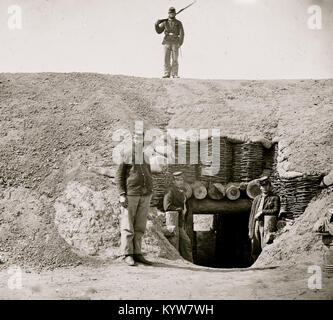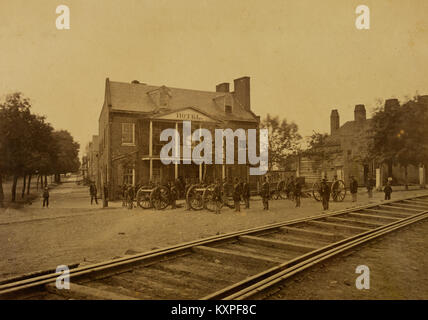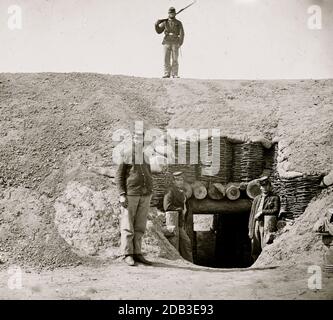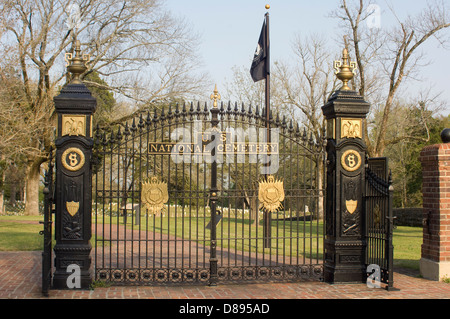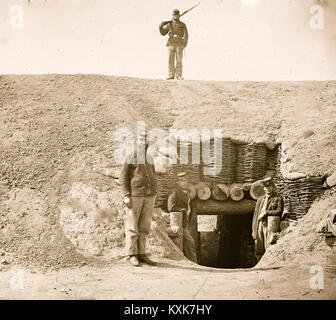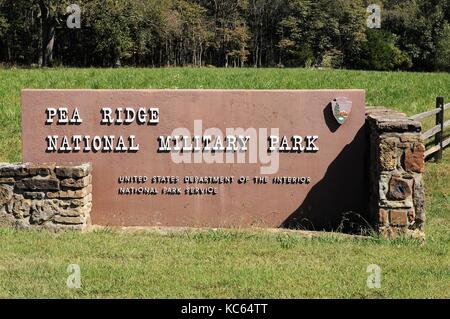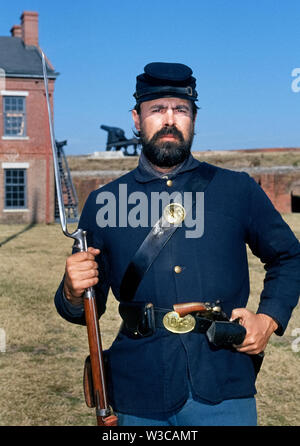
RFW3CAMT–A bearded man wearing the military uniform of a U.S. Civil War Union soldier poses with weapons he carries as an interpreter who greets visitors to Fort Clinch State Park in Fernandina Beach on the east coast of Florida, USA. His right hand holds a Springfield rifled musket with its bayonet attached, and a pistol is tucked in the leather belt around his waist that also carries ammunition. This historic fort at the entrance to Cumberland Sound and the St. Mary’s River was initially occupied by the Confederate Army until it came under control of Union troops in 1862.
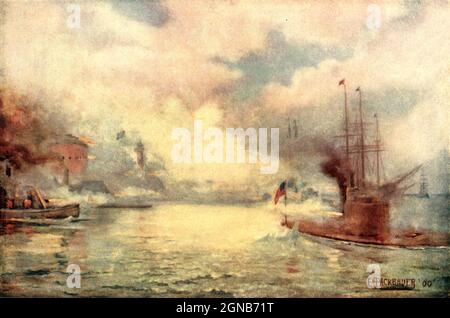
RM2GNB71T–The Battle of Mobile Bay, Alabama of August 5, 1864, was an engagement of the American Civil War in which a Union fleet commanded by Rear Admiral David G. Farragut, assisted by a contingent of soldiers, attacked a smaller Confederate fleet led by Admiral Franklin Buchanan and three forts that guarded the entrance to Mobile Bay. Farragut's order of 'Damn the torpedoes! Four bells. Captain Drayton, go ahead! Jouett, full speed!' became famous in paraphrase, as 'Damn the torpedoes, full speed ahead!' Color artwork painting from the book ' The Civil war through the camera ' hundreds of vivid photo
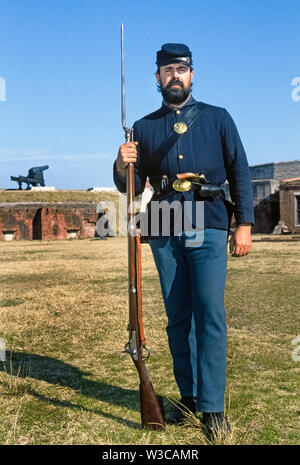
RFW3CAMR–A bearded man wearing the military uniform of a U.S. Civil War Union soldier poses with weapons he carries as an interpreter who greets visitors to Fort Clinch State Park in Fernandina Beach on the east coast of Florida, USA. His right hand holds a Springfield rifled musket with its bayonet attached, and a pistol is tucked in the leather belt around his waist that also carries ammunition. This historic fort at the entrance to Cumberland Sound and the St. Mary’s River was initially occupied by the Confederate Army until it came under control of Union troops in 1862.
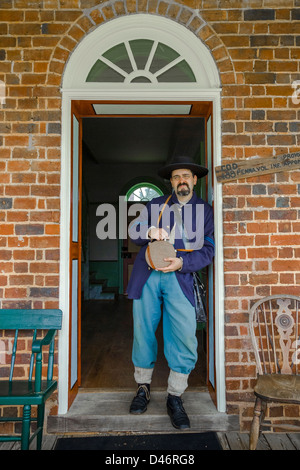
RMD46RG8–A tour guide casually dressed as a U.S. Civil War Union soldier welcomes visitors to Appomattox Court House National Historical Park in Virginia, USA.
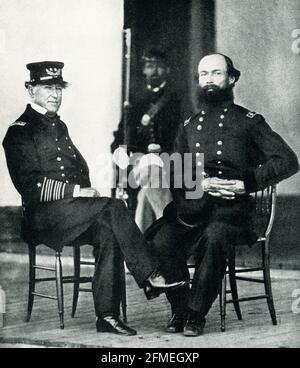
RF2FMEGXP–The 1912 caption reads: “Farragut and Granger after Battle of Mobile Bay.” The Battle of Mobile Bay of August 5, 1864, was an engagement of the American Civil War in which a Union fleet commanded by Rear Admiral David G. Farragut, assisted by a contingent of soldiers, attacked a smaller Confederate fleet led by Admiral Franklin Buchanan and three forts that guarded the entrance to Mobile Bay. The Union offensive started on August 3, 1864, with Major General Gordon Granger's landing on Dauphin Island.
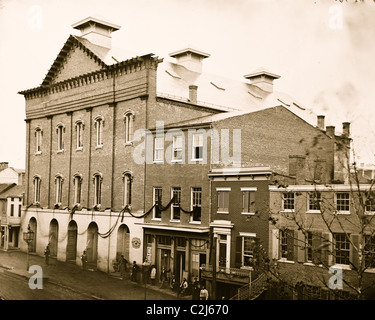
RMC2J670–Washington, D.C. Ford's Theater with guards posted at entrance and crepe draped from windows
